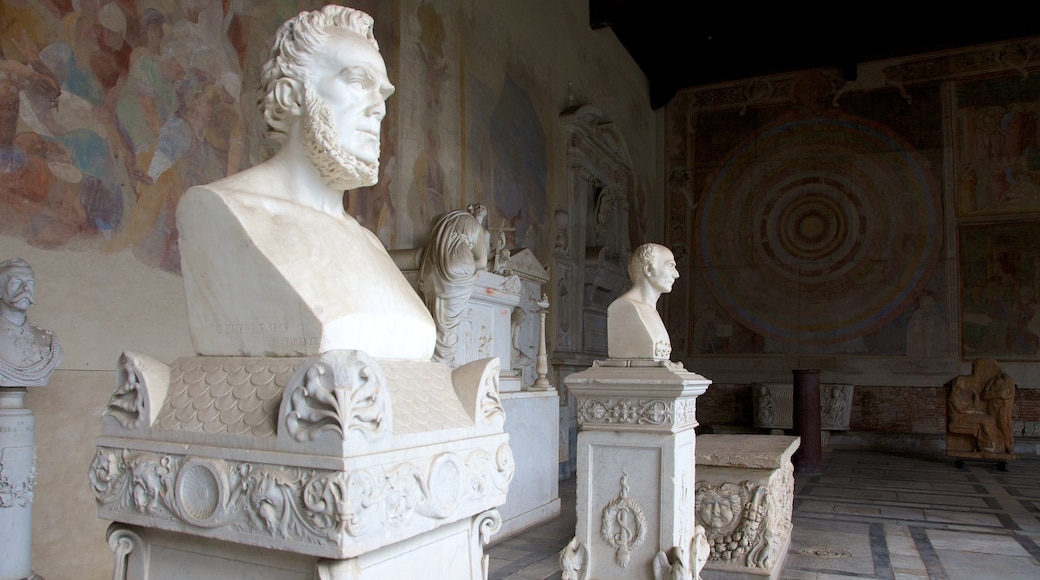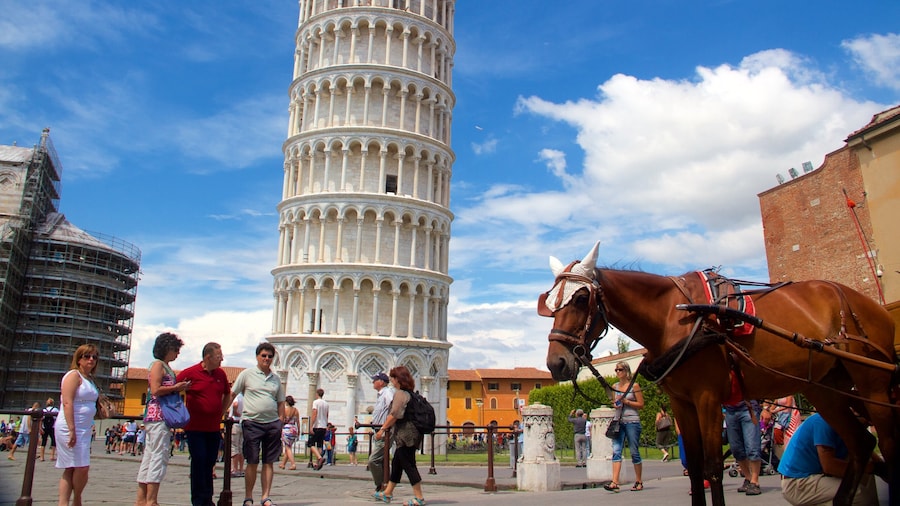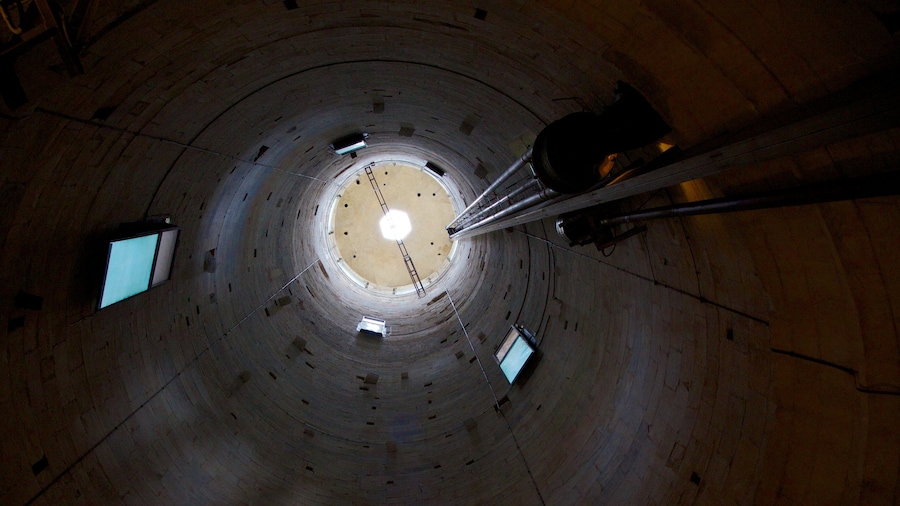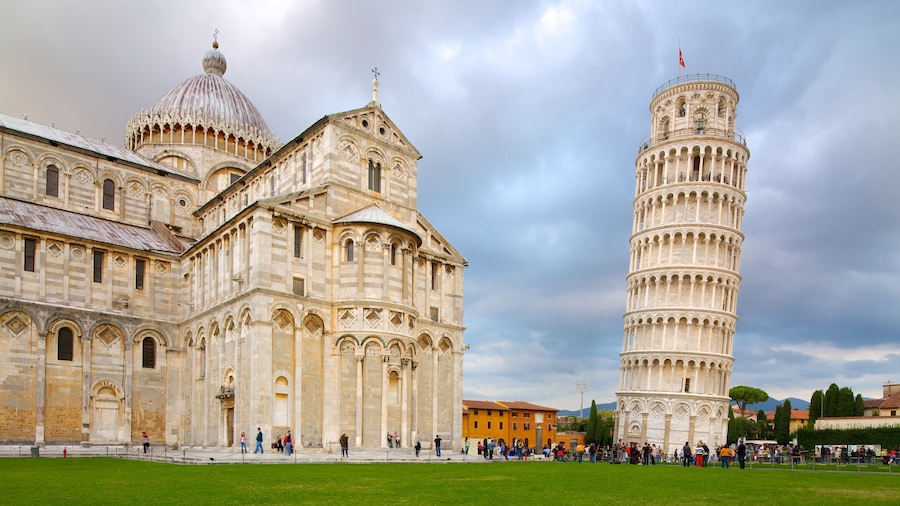Enjoy a quiet moment away from the crowds of the Piazza dei Miracoli in this sheltered cemetery on the piazza’s northern border. The lush courtyard provides a serene getaway from the bustle around the nearby Duomo and the Leaning Tower of Pisa. Expansive frescoes, Roman sarcophagi and the graves of some of Pisa’s most notable residents rest among the Camposanto’s Gothic cloisters.
Although it was built as far back as 1464, the Camposanto is the youngest structure on the Piazza dei Miracoli. Some of the cemetery’s third-century sarcophagi predate the structure by more than a millennium. The name Camposanto means “holy field” in English. It is said the cemetery rests on earth imported from the place where Jesus was crucified. Historians are unable to confirm the soil’s origins, but the legend persists regardless.
Start your visit in the northern gallery, which can be reached through the cemetery’s echoing hallways. Here, you’ll find dramatic frescoes like the Triumph of Death, alongside a haunting depiction of the Last Judgement. These were some of the first pieces restored after World War II, when bombs destroyed many of the cemetery’s larger frescoes. Step into the other galleries lining the cemetery to see the 84 Roman sarcophagi that rest here.
Walk along the paths of the courtyard to see the plaques, gravestones and tombs memorialising past residents of Pisa. Look for names you might recognise, such as Fibonacci, the great mathematician behind the Fibonacci sequence. Take your time within the walls of the Camposanto it is one of the most peaceful spots in Pisa.
The Camposanto borders the Piazza dei Miracoli to the north. Reach the cemetery on foot or by bus from the centre of Pisa. If you are driving, park for a fee on Via Pietrasantina, which is located a 5-minute walk away. To enter the Camposanto, you will need to pay an admission fee. Purchase a multi-attraction ticket for a discount. The cemetery is open daily.





























































